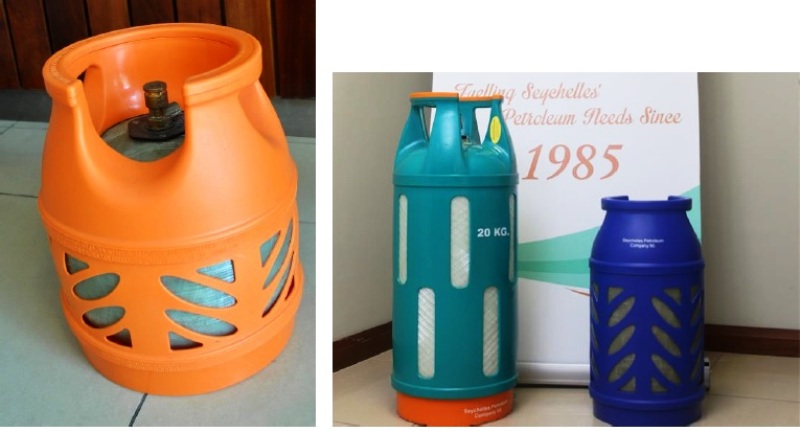Seypec decentralises sales of LPG gas cylinders, offers better exchange deal |22 August 2017

As of yesterday, customers can buy a new composite LPG cylinder of 5 and 10kg capacity directly from the service stations across Mahé, Praslin and La Digue, the Seychelles Petroleum Company (Seypec) has announced.
Previously this service was only available at the Seypec headquarters on Mahé, the Praslin depot as well as at La Digue service station.
The sales decentralisation will therefore bring the service closer to the public and will ease the process of returning empty steel cylinders to Seypec.
Customers who wish to receive a new LPG composite cylinder will be required to bring their ID card and pay a deposit for the cylinder.
Customers wishing to return an unused steel cylinder will now be able to do so at the service station, and will be refunded the corresponding deposit accordingly.
Seypec has also decided to simplify the exchange mode of LPG cylinders on a more customer friendly basis. For example, in the past a customer could only purchase a full 4.5kg LPG cylinder by providing an empty cylinder of the same capacity. This like for like exchange was applied to all cylinder sizes and types.
Henceforth, LPG cylinders will be grouped into two interchangeable categories (as shown below) with the deposits being similar in each category. A customer will now be able to swap cylinders within each group at any retail outlet.
Group 1 (Deposit R200) – will include 4.5kg and 5kg cylinders
Group 2 (Deposit of R300) – will include 9kg, 10kg and 12kg cylinders
A further interesting feature of these latest changes will allow a customer to exchange, say a 4.5kg steel cylinder for a 5kg composite cylinder, with the same principle applying to the second group for exchange of 9kg and 12kg steel cylinders for 10kg composite cylinders.
A customer will only need to pay the price of the LPG content in the cylinder which remains unchanged.
These changes are being implemented to boost the usage of composite cylinders in the country, while improving operational efficiency for a better customer service through all LPG retail channels.
According to figures compiled by Seypec, 90,000 steel cylinders are presently in circulation since LPG domestic supply started in the early 90s.
Late last year, Seypec introduced composite cylinders within its product range to overcome challenges associated with the steel cylinders. These include higher wear and tear as well as costly maintenance. More importantly, the newly launched composite cylinder is a safer product, lighter to carry and handle for the consumer and has the advantage of being translucent for a better usage management by the customer.
The composite cylinder, which meets International European quality and security standards, has been endorsed locally by the Seychelles Bureau of Standards and is a worthy replacement for the steel cylinders.
The composite cylinder is suitable for a variety of applications, both for industrial and home-users. It is made from advanced polymeric and composite materials combining uncompromising safety, quality, and versatility designed to operate across all weather conditions.
These cylinders have been put through a series of stringent tests, including pressure, drop, temperature, and burst resistant which has earned them the “across-the-board” accreditation by international standards offices.
In addition to being light compared to the steel cylinder, the composite cylinder is rust-free and explosion proof.
The composite cylinders which are sourced from Ragasco in Norway will gradually replace the current steel cylinders within the next two decades.
It is to be noted that Seypec has an on-going testing programme for all of its cylinders in line with the Seychelles Bureau of Standards (SS11) for Periodic Inspection and Testing of Re-fillable Gas Cylinders, which requires all the LPG cylinders to be tested every four years.
Seypec is currently implementing colour coding and an RFID tagging system that uses radio frequency for identification and tracking purposes to facilitate the testing programme.




